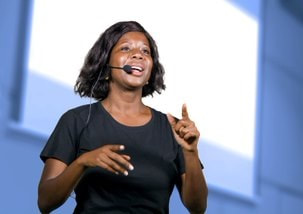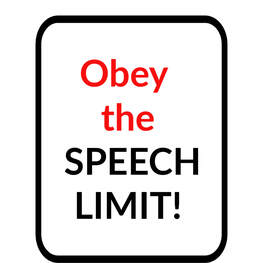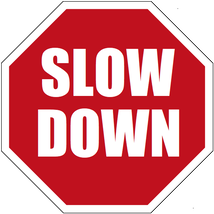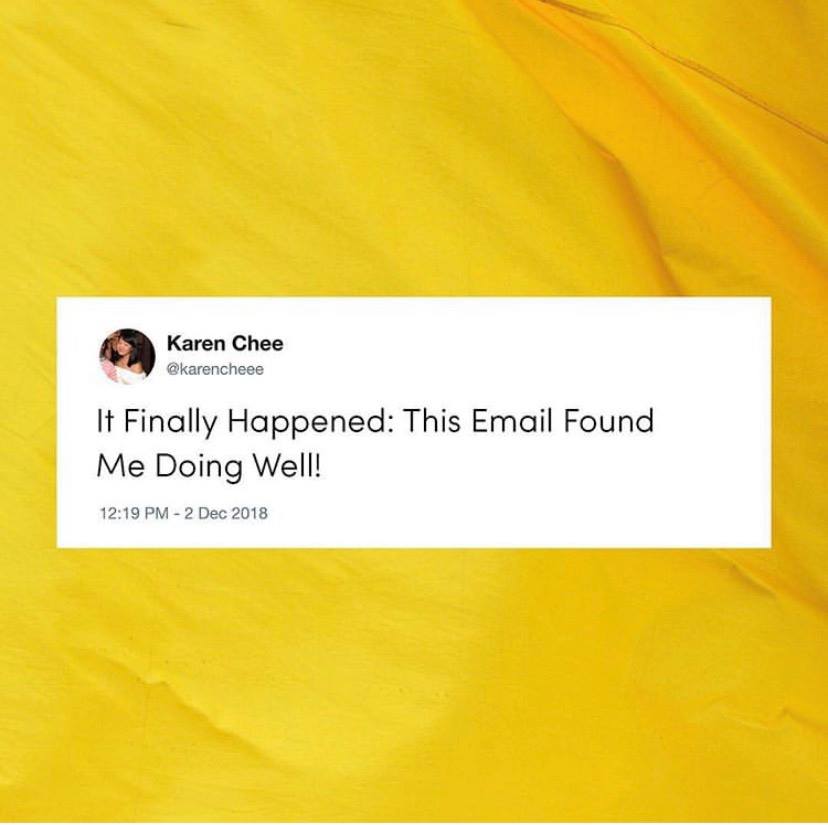|
Do you have lots of reasons you don't want to speak up at meetings or committees or give a presentation? Or maybe you have just one or two BIG ones?
When I hear people say their fears hold them back from speaking. I had extreme speaking fears of my own at one time. And I so want these people not to be fearful that I want to tell them what my old Polish aunts would tell me when negative feelings came up. “Kashka, Don't feel that way.” (But as we know, we’re not supposed to say that kind of thing anymore.) So I tell them, “Yes, feel that way. And tell me all about it.” I’ll share more about those stories, and what they can tell us in another post, but for now I want to share four common fears that stop people from speaking. I call them the “Super Silencers.” Four “Super Silencers” 1. “I'm not an expert in what I am talking about.” Recently, I’ve been talking a LOT about the “expertise myth.” It's a biggie for me because it keeps the world from hearing so many voices! The truth is you don't need to be an expert, have a PhD, or a fancy title to speak. All the “authority” you need is already in you: your experience, your insight, and what you've learned. Of course you do need a desire to share something that you think will help your audience in some way. But that is ALL you need, I promise. 2. “My material isn't interesting.” (“I work in accounting, finance, etc.” ) Everyone thinks the stuff everyone else does for work is so much more interesting than the stuff that they do. “Who wants to hear about ‘X’?" they say. I’m sure if I ever consulted in a circus related business, someone would say... “Oh death defying stunts on the flaming tightrope are so boring! Nobody could make that stuff interesting!” But the truth is that your content is interesting even if it's not flaming tightropes. Here's why: You’re presenting it because you want people to believe something new, or do something different. You are trying to get people to change in some way: change how they think about something, take an action, or know something that will impact them in some way. And change is sexy, even when it involves “pattern-matching-parameter-packets-for-the-gasket-flanges.” I know, from watching hundreds of presentations, that your content, or “subject matter,” is absolutely not the problem. It's how your content is framed - or not framed - that determines whether it’s interesting to an audience. By “framing” I mean how you package it - how you organize it, how you present it in your title or agenda. Is your content presented as an answer to a question, the solution to a problem, or a benefit to the audience? Probably not, because most people aren't trained or encouraged to even think about packaging. And that's too bad, because it is the single easiest thing you can to make your content interesting. 3. "I might lose my train of thought." This is a big one for people who are not experienced presenters. Once they get more experience they see that it happens all the time and is no big deal. There are two ways to minimize the fear of losing your place. The first is having an engaging package for your content which helps you remember where you are. When you have the standard organization for your material, a format called, “MANY MANY IMPORTANT THINGS TO KEEP IN MIND,” it's hard for you to remember, just as it’s hard for the audience to engage with. The second way to reduce your fear of losing your place is to have a storehouse of things to say so that your don't have to make up something to say in the moment. I like strategies that involve the audience, like, “What was I just saying? I got off track for a minute.” “Ok where were we?" or “Give me a minute to get back to where I was.” 4. “Something bad happened when I gave a presentation 10 years ago.” We all have a photographic memory when it comes to “Every-single-thing-I-didn’t-do perfectly-in-my-entire-life.” And of course we have complete amnesia when it comes to good stuff we did. But the truth is that something bad happened when the speakers you LOVE spoke ten years ago but they got up on stage and tried again, and again, and just kept going. And now they are really good. And that's why the most important thing you can do is to learn to learn from everything that happens and then try again, and learn from that. It’s the most important mindset skill for growth in any area, but especially speaking.
1 Comment
Many of you have told me that you were ‘terrible at public speaking” and that you “should be better” at it. The implication is that something is wrong with you personally, or that you are missing some ability that others have naturally.
But what if I asked you this: Can you juggle? Most of you would answer a simple “no,” but I doubt you would feel ashamed of the fact or mutter apologetically, "I should be able to.” Why not? Because we aren't born knowing how to juggle. Because no one ever taught you how to juggle. It's the same thing with speaking You have to learn to do it. Nobody is born with the talent to be a good speaker, just like we weren't born knowing how to juggle, salsa dance, or do math problems. It's a skill, not an innate talent. You find out how to do it, you practice it, you get better at it. And if you want to get better at it, I've created a course to help you do it. Say it With Confidence starts on March 15. In this 4-week online course, I'll work with a small group of participants who want a supportive, encouraging, expert-led opportunity to learn and practice the basic skills they need to feel confident as a speaker. The group will meet weekly on Zoom and there will be optional homework and practice in between. Meetings will be held on 4 consecutive Tuesday, 12 noon - 1 ET. (3/15, 3/22, 3/29, 4/5). By the end of the four weeks, each participant will be able to plan, create, and deliver a compelling 2 to 3-minute talk on a topic of their choice. Enrollment for Say it with Confidence will close 11:59, Saturday, March 12 EST. So, if you want to build speaking confidence and skills with a small group of like-minded people, stay tuned. Interested? Contact me for more information! [email protected] thieWay back in the summer, I asked the people on my mailing list to tell me what they needed to become a better speaker. I wanted to learn what their needs were so that I could create an online course that met those needs.
Here's a sample of the questions respondents shared:
How can I be more confident as a speaker? I understand that completely. People (like you maybe?) want to be able to share their ideas and opinions with the world. They (and you?) want to have an impact as a communicator, whether it's at work, in the community, in political life. I want you to do that. I found my own way to confidence many years ago, and in the past twenty years, I've helped hundreds of people find theirs. Here's what I want to tell you: confidence is not magic. There is nothing mystical about it. And it's not one of those “you either have it or you don't things” like being double-jointed or having a photographic memory. Confidence is a muscle. * (At the end of the email I'll explain where I stole that phrase from.) That means you can BUILD IT. And over the next two weeks, I'm going to be sharing some of the ways you can do that. But in the meantime, I want to suggest you take one tiny two-minute step towards confidence. That step is learning more about the perceived obstacle that stands between you and confidence. All you have to do is take a couple of minutes and complete on one or more of the questions below. ([Don't take too long or think too much: this is an “off-the-top-of-your-head” exercise, not a “Need to call my therapist” situation.) You can jot down the answers for your own reflection or click here to use this google form and share them with me, so I can share the answers (anonymously of course). Answer as many as apply to you. “The reason I lack confidence is because______________.” I'm not confident because I'm not __________ enough. I'm not confident because I don't have enough _______ . I'm not confident because I'm always __________ . ------------------------------------------------------------------- I’ll be back with another blog very soon to talk about building confidence. Cathy P.S. If you missed the survey about public speaking needs and want to add your voice, click here. P.P.S. I live in Western Massachusetts, close to the town of Amherst, where in 1992-93 the Amherst High School Lady Hurricanes basketball team won the state championships. Pulitzer Prize winning writer Madeline Blais, wrote a wonderful book about the team called, “In These Girls, Hope is a Muscle.” ARE YOU TALKING FASTER THAN
|
Want to get tips like this in your mailbox (once in a while)? Sign up here: |
|
I once worked with someone in a finance department who was good with the company’s money but less so with email communication. When you got an email from her, it meant one thing: disappointment. She might be writing to tell you that your paycheck would be lower than expected or that you couldn’t expense for a something you had hoped to. ( Mai Tais for the entire accounting group - and all their cousins? Sorry, no!)
Her emails had a 100% chance of disappointing you. That was bad enough. But the worst part of the her “smackdown” was that she always started her emails with, “I hope this email finds you well.”
Sure the email may find us well but it certainly wouldn’t leave us well. Since those days I’m superstitious. When someone uses “I hope this finds you well,” I wonder what the bad news is.
That finance employee wasn’t the only email writer who depended on that officious opening - many people do. Usually they are people who think they have to have something to start off with and have no idea what to say.
If you want to say something friendly, you have lots of choices, all of which are better than “I hope this finds you well.” See Karen Hertzberg’s piece about alternatives here.
But really, you don’t need a “fuzzy opening.” Most of the time it is fine to say “Hi Dave, I’m writing to let you know that…” Don’t do that if the reader’s name is not Dave, but you get the idea. If your content-related words are clear and positive, you don’t need a “fuzzy.”
Sure there are times you want an opener. Maybe you haven’t spoken to the recipient in a while and you need a “fuzzy” to warm things up. But you know what DOESN’T warm things up? “I hope this email finds you well.” There is nothing warm about it. Because it sounds like you reached way way back to the 19th century to find something to say. Maybe if you added “My good man,” and refilled your quill pen it would be right, but in 2019 it is not.
In most emails it’s kind of a code for “I HAVE NO IDEA OF WHAT TO SAY TO YOU PEOPLE SO I GUESS THIS IS GOOD, RIGHT?” It’s a favorite of young professionals who don't have the confidence to skip it so they default to the most polite, official phrase they can find.
So here’s a tip. Imagine something you might actually say if you were to meet or talk to the person. I’m going to guess that there is a 100% chance that you would never utter the words “I hope this finds you well.” Imagine saying to a friend, “Hey Bill, I hope this beer finds you well.” No, not happening.
You might say something about the weather; you might refer to the last time you interacted; you might thank the person for something they did. You might refer to something they are currently dealing with. Any of those - even the weather cliche - is better than, well, you know.
But really, you don’t HAVE to have a fuzzy. Try it. Just jump right in in a friendly positive way.
Tell me how it works.
Do you have a favorite way to start emails? Share it in the comments. Or send it to me at [email protected].
Credit: Thank you to comic writer Karen Chee for permission to use her tweet. Find her funny tweets at @karencheee
Her emails had a 100% chance of disappointing you. That was bad enough. But the worst part of the her “smackdown” was that she always started her emails with, “I hope this email finds you well.”
Sure the email may find us well but it certainly wouldn’t leave us well. Since those days I’m superstitious. When someone uses “I hope this finds you well,” I wonder what the bad news is.
That finance employee wasn’t the only email writer who depended on that officious opening - many people do. Usually they are people who think they have to have something to start off with and have no idea what to say.
If you want to say something friendly, you have lots of choices, all of which are better than “I hope this finds you well.” See Karen Hertzberg’s piece about alternatives here.
But really, you don’t need a “fuzzy opening.” Most of the time it is fine to say “Hi Dave, I’m writing to let you know that…” Don’t do that if the reader’s name is not Dave, but you get the idea. If your content-related words are clear and positive, you don’t need a “fuzzy.”
Sure there are times you want an opener. Maybe you haven’t spoken to the recipient in a while and you need a “fuzzy” to warm things up. But you know what DOESN’T warm things up? “I hope this email finds you well.” There is nothing warm about it. Because it sounds like you reached way way back to the 19th century to find something to say. Maybe if you added “My good man,” and refilled your quill pen it would be right, but in 2019 it is not.
In most emails it’s kind of a code for “I HAVE NO IDEA OF WHAT TO SAY TO YOU PEOPLE SO I GUESS THIS IS GOOD, RIGHT?” It’s a favorite of young professionals who don't have the confidence to skip it so they default to the most polite, official phrase they can find.
So here’s a tip. Imagine something you might actually say if you were to meet or talk to the person. I’m going to guess that there is a 100% chance that you would never utter the words “I hope this finds you well.” Imagine saying to a friend, “Hey Bill, I hope this beer finds you well.” No, not happening.
You might say something about the weather; you might refer to the last time you interacted; you might thank the person for something they did. You might refer to something they are currently dealing with. Any of those - even the weather cliche - is better than, well, you know.
But really, you don’t HAVE to have a fuzzy. Try it. Just jump right in in a friendly positive way.
Tell me how it works.
Do you have a favorite way to start emails? Share it in the comments. Or send it to me at [email protected].
Credit: Thank you to comic writer Karen Chee for permission to use her tweet. Find her funny tweets at @karencheee
MILLENNIALS ARE TOO POLITE! THREE EMAIL MISTAKES YOUNG PROFESSIONALS MAKE – AND HOW TO FIX THEM
2/13/2019
Ask young professionals about the challenges of the workplace, and I'll bet they say email. I've worked with hundreds of millennials as a communication trainer, and I know they find writing a headache. It’s not that millennials can’t write; they can write academic essays and research papers very well. But they struggle with the peculiar demands of the style I call “American Professional Email,” or APE.
Workplace communicating makes young professionals nervous
They’ve just spent 16 years seeing “adults” as teachers, bosses, coaches, and themselves as “kids.” The relationship was one of deference, and often close to parental. And then one summer day just after they graduate, when they should be sitting around playing “left4dead2” and drinking beer, they have to put on extremely expensive clothing, work all day, every day, and interact with older adults as colleagues for the first time in their lives.
Why "American Professional Email" can be tricky to master
In person, communication can be awkward; but in writing, or A.P.E., it's much worse. After all, most young professionals who work in finance, tax, or engineering didn’t go into those fields because they loved writing. They like spreadsheets and schematics, and they do not like using writing to handle the constant negotiations, requests, and reports that are part of the job. And sometimes emails have to be used to convey bad news, so getting the tone right can be a challenge. One engineer fairly new to the workplace told me that “The worst thing is having to tell someone older and more experienced than you that they are wrong – in an email!” And since most interactions with colleagues, managers, and clients take place through email, their writing skills are on display all day every day.
What happens if you fail to nail email? (Hint: they’re judging you.)
For many these millennials, mastering American Professional Email (APE) takes time and training, but as I assure them, it’s worth it. Communication skill is THE differentiator in professional life, especially when you and your peers have equal technical skills. Poorly written emails annoy readers. And it’s probably unfair, but ineffective emails can cause readers to make conclusions about a writer’s competence.
Here are the three writing problems common to young professionals and how to fix them.
1. Over-politeness. There is such a thing as being too polite, unless you’re talking to your grandma. Because millennials are raised to be courteous, many of them write emails with a painfully excessive politeness which can make the writer look guilty and needy rather than confident. Many struggle to even call colleagues by their first name. (In fact, at one employer I worked with, new hires had to be continually reminded not to add “Miss” to female colleagues' first names.) Many new hires are way too quick to apologize for any request, or show fawning gratitude for any small task done.
The FIX for over-politeness Okay, you’re often the lowest status person on the team. But you’re still a professional, and you don’t need to sound like a supplicant kneeling before the king. It’s great to be polite, but it’s important to tuck manners into the point, not keep the point waiting for all the bowing and sniveling. Learn to express your politeness in short phrases that get the job done fast. For example, “I would really appreciate it if you…” Or “If you have time, can you…?” can be fast ways of showing that you’re thoughtful and efficient.
2. Too many words! Like the over-politeness, wordiness can result from insecurity about how to communicate at work. Lots of words can be like comforting blankets which make us feel safe, but often end up smothering our point. And of course wordiness is also a direct result of having an education. School has made all of us masters at larding our point with extra words, and so much the better if they can be "SAT words." In school, the more words the better; at work messages are expected to be concise and to the point.
THE FIX to wordiness If your sentences tend to average 20 words or more, you are probably too wordy. Look hard at your emails before they go out: Could you cut words, say things more concisely? One tip to find the shortest way to express something? Ask yourself how you would say it in conversation. We tend to speak in a more direct and natural way than we write. Also, ask a friend to find “deadwood” in your sentences – others can see extra words faster than you. And of course, do the same for your friend.
3. Not getting to the point. This email problem is the one that’s most annoying to readers. Readers usually have just two or three questions when they read an email – what do you want me to know? What do you want me to do? And is there a deadline? But young professionals (they are not alone in this of course! ) often bury the lead beneath lots of background (“first this happened, then that happened.”). They make readers do the detective work to find the point. And busy distracted readers do not want to do extra work! We can place part of the blame on school again, because academic writing often builds up to a conclusion. But in American Professional Email (APE), we always put the most important info at the top.
The FIX for not getting to the point. First figure out what the main point of your email is BEFORE you start writing. I promise it takes about 60 seconds to do this. Then try to put that point right at the top – or close to the top - of your email. Make it extremely easy for the reader to see the message and the reader will adore you! (Professionally of course.) If you need to put in some background, see if you can put it in below the key point. You can even give it a headline like “Here’s why I ask,” or “Rationale for Request” if you like to be fancy. The military has a shorthand reminder to help people remember to get to the point pronto: BLUF (Bottom Line Up Front). Make it yours too.
So millennials, (and anyone else whose emails need tweaking) you can do it. It’s not hard! And if you need coaching on any of these issues or other communication challenges, give me a holler.
Workplace communicating makes young professionals nervous
They’ve just spent 16 years seeing “adults” as teachers, bosses, coaches, and themselves as “kids.” The relationship was one of deference, and often close to parental. And then one summer day just after they graduate, when they should be sitting around playing “left4dead2” and drinking beer, they have to put on extremely expensive clothing, work all day, every day, and interact with older adults as colleagues for the first time in their lives.
Why "American Professional Email" can be tricky to master
In person, communication can be awkward; but in writing, or A.P.E., it's much worse. After all, most young professionals who work in finance, tax, or engineering didn’t go into those fields because they loved writing. They like spreadsheets and schematics, and they do not like using writing to handle the constant negotiations, requests, and reports that are part of the job. And sometimes emails have to be used to convey bad news, so getting the tone right can be a challenge. One engineer fairly new to the workplace told me that “The worst thing is having to tell someone older and more experienced than you that they are wrong – in an email!” And since most interactions with colleagues, managers, and clients take place through email, their writing skills are on display all day every day.
What happens if you fail to nail email? (Hint: they’re judging you.)
For many these millennials, mastering American Professional Email (APE) takes time and training, but as I assure them, it’s worth it. Communication skill is THE differentiator in professional life, especially when you and your peers have equal technical skills. Poorly written emails annoy readers. And it’s probably unfair, but ineffective emails can cause readers to make conclusions about a writer’s competence.
Here are the three writing problems common to young professionals and how to fix them.
1. Over-politeness. There is such a thing as being too polite, unless you’re talking to your grandma. Because millennials are raised to be courteous, many of them write emails with a painfully excessive politeness which can make the writer look guilty and needy rather than confident. Many struggle to even call colleagues by their first name. (In fact, at one employer I worked with, new hires had to be continually reminded not to add “Miss” to female colleagues' first names.) Many new hires are way too quick to apologize for any request, or show fawning gratitude for any small task done.
The FIX for over-politeness Okay, you’re often the lowest status person on the team. But you’re still a professional, and you don’t need to sound like a supplicant kneeling before the king. It’s great to be polite, but it’s important to tuck manners into the point, not keep the point waiting for all the bowing and sniveling. Learn to express your politeness in short phrases that get the job done fast. For example, “I would really appreciate it if you…” Or “If you have time, can you…?” can be fast ways of showing that you’re thoughtful and efficient.
2. Too many words! Like the over-politeness, wordiness can result from insecurity about how to communicate at work. Lots of words can be like comforting blankets which make us feel safe, but often end up smothering our point. And of course wordiness is also a direct result of having an education. School has made all of us masters at larding our point with extra words, and so much the better if they can be "SAT words." In school, the more words the better; at work messages are expected to be concise and to the point.
THE FIX to wordiness If your sentences tend to average 20 words or more, you are probably too wordy. Look hard at your emails before they go out: Could you cut words, say things more concisely? One tip to find the shortest way to express something? Ask yourself how you would say it in conversation. We tend to speak in a more direct and natural way than we write. Also, ask a friend to find “deadwood” in your sentences – others can see extra words faster than you. And of course, do the same for your friend.
3. Not getting to the point. This email problem is the one that’s most annoying to readers. Readers usually have just two or three questions when they read an email – what do you want me to know? What do you want me to do? And is there a deadline? But young professionals (they are not alone in this of course! ) often bury the lead beneath lots of background (“first this happened, then that happened.”). They make readers do the detective work to find the point. And busy distracted readers do not want to do extra work! We can place part of the blame on school again, because academic writing often builds up to a conclusion. But in American Professional Email (APE), we always put the most important info at the top.
The FIX for not getting to the point. First figure out what the main point of your email is BEFORE you start writing. I promise it takes about 60 seconds to do this. Then try to put that point right at the top – or close to the top - of your email. Make it extremely easy for the reader to see the message and the reader will adore you! (Professionally of course.) If you need to put in some background, see if you can put it in below the key point. You can even give it a headline like “Here’s why I ask,” or “Rationale for Request” if you like to be fancy. The military has a shorthand reminder to help people remember to get to the point pronto: BLUF (Bottom Line Up Front). Make it yours too.
So millennials, (and anyone else whose emails need tweaking) you can do it. It’s not hard! And if you need coaching on any of these issues or other communication challenges, give me a holler.







 RSS Feed
RSS Feed